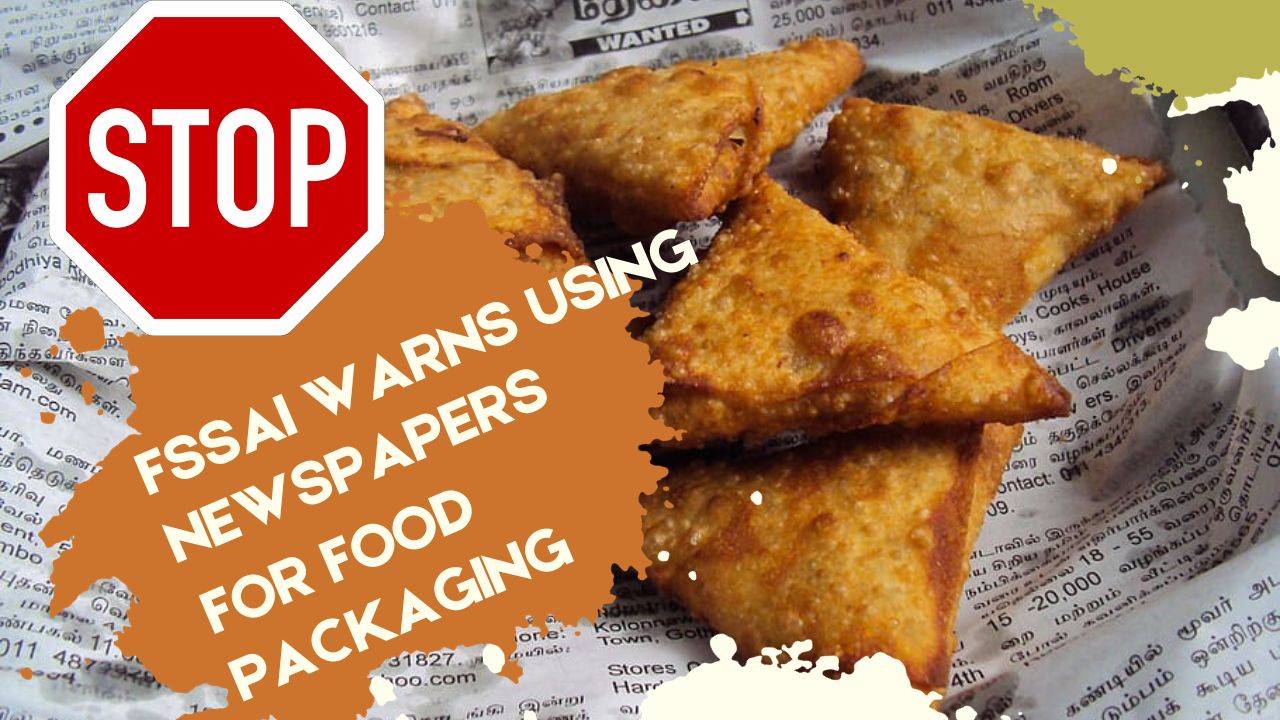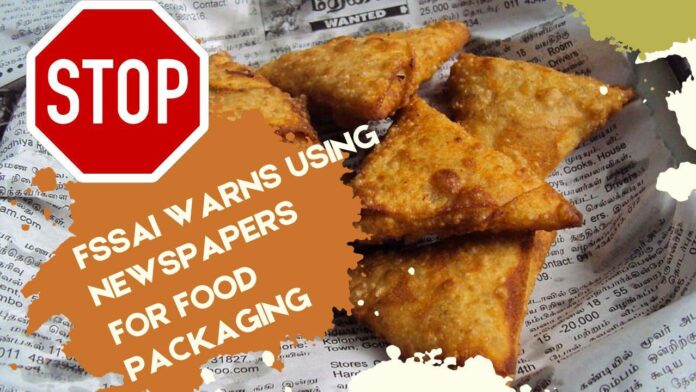-
Home -
News
FSSAI has issued a warning about the presence of harmful substances in newspaper ink that may cause adverse health effects when consumed, potentially contaminating food and causing health problems.

FSSAI, the Food Standards Regulatory Authority of India, has advised food vendors and consumers to stop using newspapers for food packaging and storage due to serious health concerns. They are working closely with state food authorities to enforce this regulation. FSSAI CEO, G Kamalavardhana Rao has strongly urged people across the country to immediately stop using newspapers for these food related purposes.
Is paper ink harmful?
Foods stained with newspaper ink can pose significant health risks due to the presence of various bioactive substances causing adverse health effects. Printing inks contain harmful dyes, pigments, binders, additives and preservatives.
Is newspaper ink still toxic?
Both black and color inks are used in printing. Studies show that traditional newspaper inks, particularly those using petroleum-based inks with significant presence of volatile organic compounds (VOCs), are considered hazardous and unsafe. However, contemporary newspaper printing now incorporates modern inks derived from soybeans, water, or wax, which are considered safer alternatives.
What are the health risks involved?
The use of newspaper ink as a food packaging material is not recommended, as it poses several health risks. Newspaper ink is not designed or tested for direct contact with food, and may contain potentially harmful substances. Some of the health risks associated with using newspaper ink for food packaging are:
-
Chemical Pollution: Newspaper ink can contain various chemicals, such as heavy metals, solvents, and petroleum-based compounds. These substances can get into food and can cause health hazards from food.
-
Toxic ingredients: Some newspaper inks may contain toxic ingredients such as lead, cadmium and other heavy metals. Exposure to these metals can cause serious health problems, especially when consumed over time.
-
Microbial contamination: Newspaper can be contaminated with bacteria, fungi and other microorganisms. Using it as a food wrapper can introduce these pathogens into the food, increasing the risk of foodborne illness.
-
Allergic reactions: Some people may be allergic to the ingredients in newspaper ink, which can cause an allergic reaction when they eat food that has come into contact with the ink.
-
Unknown Ingredients: The composition of newspaper ink can vary from one publication to another, making it difficult to know what chemicals and substances are in the ink. This uncertainty raises concerns about potential health risks.
-
Transfer of harmful substances: Over time, newspaper ink can degrade or transfer to food, especially when exposed to moisture or heat. This can result in the consumption of ink particles or chemicals.
Therefore, FSSAI has requested consumers, food sellers, and stakeholders across the country to immediately stop the practice of using newspapers as food packaging and instead use safe and authorized food packaging materials and Advised to adopt containers that meet food grade standards. This is to ensure the safety and health of consumers.
#FSSAI (Food Safety and Standards Authority of India) has urged consumers and food vendors to stop using it. # Newspapers For packing, serving and storing food items. This involves a huge health risk because the ink used in newspapers contains bioactive materials with adverse health effects! pic.twitter.com/4yjMJ161nd
— Sridhar Pillai (@sri50) September 28, 2023
First Published: 29 Sep 2023, 09:37 IST
Take the quiz.
Show your support for agrijournalism.
Dear Patron, Thank you for being our reader. Readers like you are our inspiration to advance agri-journalism. We need your support to continue delivering quality agri journalism and reach farmers and people in every corner of rural India.
Every contribution is valuable for our future.
